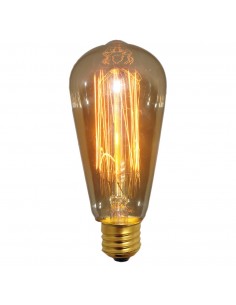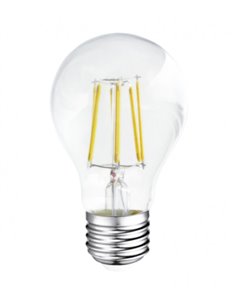LED Light Bulbs

LED bulbs offer numerous advantages, making it challenging to overlook them when deciding on lighting for our lamps. Not only are they more efficient and longer-lasting than incandescent or fluorescent bulbs, but they also exhibit increased resistance to vibration and shock. Additionally, they are environmentally friendly, no longer containing toxic materials, and they can produce light in a diverse range of shades and colors. Today, there is a wide variety of LED bulbs available, each designed to fit various types of luminaires. They come in different shapes and sizes, catering to diverse preferences. This flexibility is particularly valuable for vintage lamps where the bulb is prominently featured and visible to all. LED bulbs are available in globe shapes, elongated forms, or even candle shapes, often providing a soft and warm ambient lighting. Moreover, there are innovative options with unique features, such as bulbs equipped with motion sensors, intelligent functionalities, or even built-in speakers. The versatility and advancements in LED bulb technology make them a compelling choice for a range of lighting needs.
Why are LED bulbs more efficient?
They are significantly more efficient because they use almost all the energy they consume to produce light, emitting very little heat. In contrast, traditional bulbs waste up to 90% of their energy as heat, which leads to much higher energy consumption. To put it into perspective, an 8–10W LED bulb produces the same amount of light as a 60W incandescent bulb — which translates to up to 80% savings on your electricity bill!
But there’s more: LED bulbs also have a much longer lifespan — between 15,000 and 50,000 hours, which is equivalent to 10–20 years if used around 3 hours per day. Compared to the 1,000 hours (roughly one year) of a conventional bulb, the savings are clear.
In short, they consume less, last longer, and help us save money while taking care of the planet. What more could you ask for?
What should I consider when buying an LED bulb?
Before buying an LED bulb, the first thing to check is that the bulb’s base matches the socket of the lamp you’ll be using (E27, E14, GU10, G9, etc.). Don’t just look at watts (W), since LED bulbs use much less power — pay attention to lumens, which indicate how much light the bulb actually emits. Each room requires a specific number of lumens. For example, a living room usually needs between 100 and 150 lumens per square meter.
If your installation supports it, you can choose dimmable bulbs, which allow you to adjust brightness depending on the ambiance you want.
Another key factor is the CRI (Color Rendering Index): the higher the CRI, the more accurately colors appear. For home use, look for a CRI of 80 or above.
And when it comes to design, there are decorative filament bulbs that look great in vintage-style lamps where the bulb is visible.
What certifications should LED bulbs have?
To ensure the bulbs are high-quality, efficient, and safe, it’s essential that they have the following certifications:
-
CE: Confirms compliance with European safety standards.
-
RoHS: Indicates the bulb is free from hazardous materials such as lead or mercury.
Other optional certifications include:
-
Energy Star (commonly found on imported products): Certifies energy efficiency.
-
TÜV or GS: These labels mean the product has passed independent safety testing.





